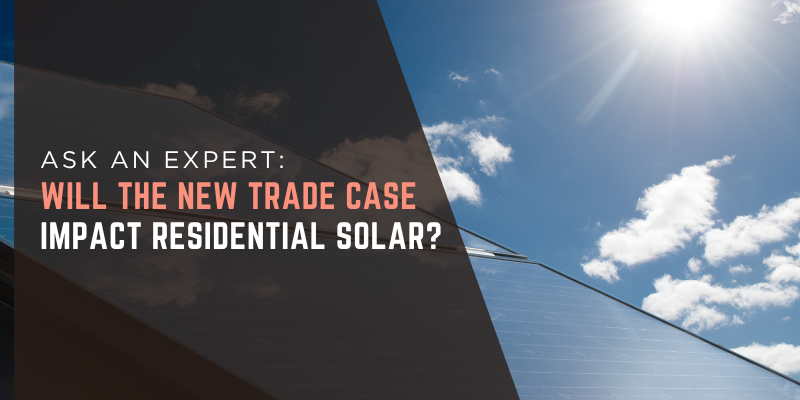
With the passage of the “One Big Beautiful Bill” (OBBB), the Consumer solar tax credit ends at midnight on New Year’s Eve 2025. This means that systems must have “expenditures made” before this time in order to qualify for the 30% tax credit. This has many homeowners asking whether it’s too late to go solar and when is the latest they can start their projects?
Solar.com’s One Big Beautiful Bill Resource Center:
- FAQs about the OBBB
- Homeowner guide to going solar in the OBBB rush
- What homeowners need to know about leasing solar post-OBBB
- Archive: tracking the OB3 through the House and Senate
Deadline to Start Projects that Qualify for a 30% Tax Credit
There is no hard and fast rule as to when homeowners need to start their project in order to ensure a high probability that they meet the definition of “Expenditure Made” before the tax credit expires at the end of the year. In a normal market, the typical cycle from contract to installation can take around 3 months to complete. This time period accounts for site visits, engineered drawings, and permits to be pulled.
However, the time between contract and installation can vary by market. In some areas, installations can happen within a month of the contract being signed, and in other locations it’s typical to take up to six months. The big difference between these markets is usually due to factors outside the control of the installation party. Some utilities and AHJs (Authorities Having Jurisdiction) can be very slow to turn permits and approvals. Jurisdictions that allow for electronic submittal of permits, mainly through the SolarApp program, are typically much faster.
In the second half of 2025, consumers must also consider the installer’s capacity, as there’s been an understandable rush of homeowners trying to get solar installed before the end of the year.
The Solar.com Approach
Solar.com, as a platform, is unique in that our Energy Advisors work to source multiple quotes from qualified installers, and we’re actively monitoring their backlogs as well as area delays related to permitting. There are some areas where we’re already advising homeowners that there is a risk their project will not be installed before the end of the year. In the upcoming days and weeks, we’re expecting those areas to grow. And in some areas, there is only a single installer left with capacity for installation.
While solar.com does not perform installations, the team remains actively involved with the oversight of your project and has strong relations with our qualified installer network to help prioritize our projects.
Questions You Should Ask When Going Solar in Late 2025
Whether working with solar.com or another party, going solar is an investment and homeowners should not feel pressured to make a decision they aren’t comfortable with. Sales reps who misrepresent deadlines or the situation should be instantly disqualified from your consideration, as this is an early warning sign as to how the rest of the project might go. Do not pay in full for a project at contract signing, especially if a rep tells you this will “lock in” your tax credit eligibility.
Here are some questions to ask before signing a solar contract in 2025:
- How many other projects are in front of yours in line to get installed?
- What is the installer’s current turnaround time for installations?
- What is the cancellation policy if the project can’t be installed before the end of the year?
- Can the installation company convert the project to a Third-Party Owned arrangement, such as a lease or PPA, that retains 48E tax credit eligibility through 2027?

Defining the “Expenditures Made” for the Solar Tax Credit
As we wrote in our Frequently Asked Questions about the OBBB, the final bill language calls for projects to have “expenditures made” by the end of the year. Tax lawyers and accountants we’ve spoken with have all universally agreed that this means, at minimum, mechanical completion (also known as installation) must be completed before the end of the year.
However, if you’re still waiting for the final permit sign-off or interconnection/Permission to Operate from your utility company, you’re likely okay. Please note that this is not tax advice and we recommend consulting your own tax advisor for their interpretation of the rules and your individual tax situation.


